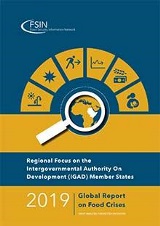Publications
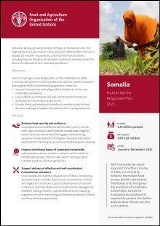
Somalia: Humanitarian Response Plan 2021
03/2021
Somalia is facing a growing number of threats to its food security. The ongoing desert locust invasion, socio-economic effects of the coronavirus disease 2019 (COVID-19) pandemic and recurrent climate shocks, including frequent flooding and drought, continue to severely impact the lives and livelihoods of the vulnerable population.
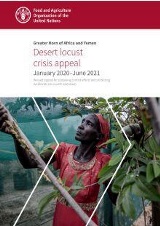
Greater Horn of Africa and Yemen: Desert locust crisis appeal January 2020 – June 2021
12/2020
The document is the revised version of the previously published Desert locust crisis appeal, providing an update and expansion of FAO's funding requirements for rapid response and sustained actions in the Greater Horn of Africa and Yemen to address the ongoing crisis.
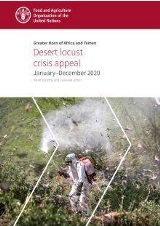
Greater Horn of Africa and Yemen: Desert locust crisis appeal (January–December 2020)
05/2020
The worst desert locust outbreak in decades is underway in the Greater Horn of Africa and Yemen, where tens of thousands of hectares of cropland and pasture have been damaged in Djibouti, Eritrea, Ethiopia, Kenya, Somalia, South Sudan, the Sudan, Uganda, the United Republic of Tanzania and Yemen, with potentially severe consequences for agriculture-based livelihoods in contexts where food security is already fragile.

FAO's role in humanitarian contexts: Saving lives through stronger, more resilient livelihoods - Revised version
04/2020
The number of people experiencing hunger – both chronic and acute – has been persistently high in recent years.
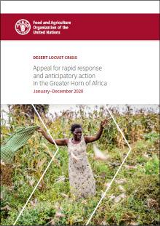
Desert Locust crisis: Appeal for rapid response and anticipatory action in the Greater Horn of Africa January–December 2020
02/2020
The worst desert locust outbreak in decades is underway in the Greater Horn of Africa, where tens of thousands of hectares of cropland and pasture have been damaged in Djibouti, Eritrea, Ethiopia, Kenya, Somalia, South Sudan, Uganda and the United Republic of Tanzania, with potentially severe consequences for agriculture-based livelihoods in contexts where food security is already fragile.
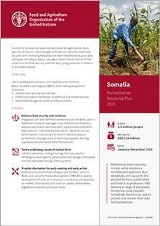
Somalia: Humanitarian Response Plan 2020
02/2020
Since 2016, Somalia has faced climate shocks for eight back-to-back agricultural seasons. From drought to floods and cyclones, these have been increasingly frequent and exacerbated by plant pest outbreaks, including a recent and serious upsurge in desert locusts. This all further undermines the food security, nutrition and coping capacities of millions of already vulnerable people.
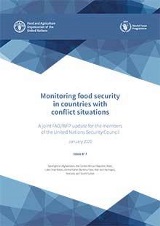
Monitoring food security in countries with conflict situations (Issue No.7 - January 2020)
01/2020
This seventh FAO/WFP update to the UNSC covers five countries (Afghanistan, the Central African Republic, Haiti, Somalia and South Sudan) and two regions (the Lake Chad Basin and central Sahel) that are currently experiencing protracted conflict and insecurity and in which, according to latest figures, almost 30 million people need urgent food, nutrition and livelihood assistance.
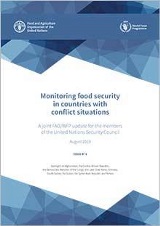
Monitoring food security in countries with conflict situations (Issue No.6 - August 2019)
09/2019
This update, facilitated by the Food Security Information Network and produced under the Global Network Against Food Crises, provides the members of the United Nations Security Council with an overview of the magnitude, severity and drivers of acute food insecurity in nine countries and territories that have the world’s highest burden of people in need of emergency food, nutrition and livelihood assistance as a result of protracted conflict combined with other factors.
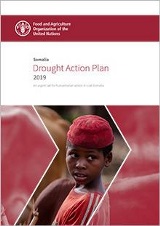
Somalia Drought Action Plan 2019
06/2019
Somalia is experiencing a severe drought across most of the country. Based on rain performance so far, the upcoming Gu harvest will likely be half of a normal year at best. This is especially grim as Somalia produces only around one-third of its cereal requirements in a normal year. Livestock are in extremely poor condition and risk dying in large numbers if the rains continue to be poor.
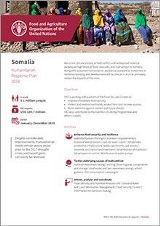
Somalia: Humanitarian Response Plan 2019
02/2019
Recurrent climate shocks, armed conflict and widespread violence perpetuate high levels of food insecurity and malnutrition in Somalia.
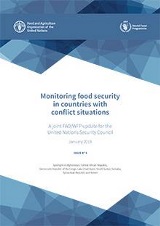
Monitoring food security in countries with conflict situations (Issue No.5-January 2019)
01/2019
The fifth issue of the FAO/WFP update for the United Nations Security Council (UNSC) provides United Nations Security Council (UNSC) members with an overview of the magnitude, severity and drivers of acute food insecurity in eight countries and regions that have the world’s highest burden of people in need of emergency food, nutrition and livelihood assistance as a result of protracted conflict combined with other factors.


